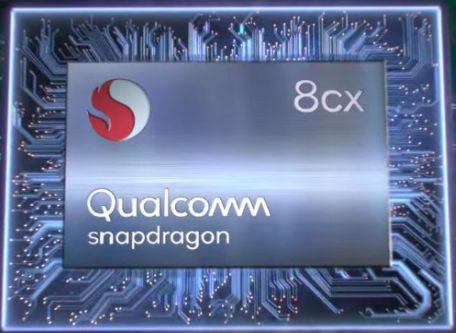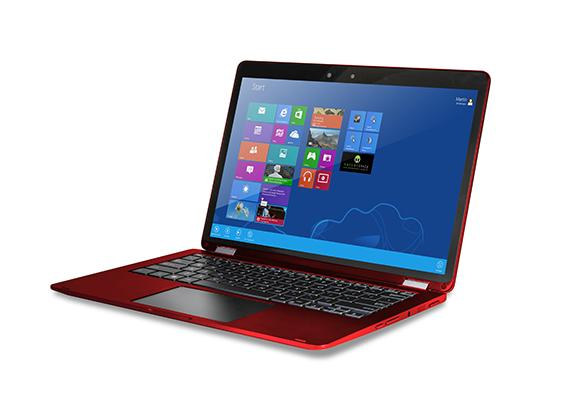The first day of Qualcomm Tech Summit focused on 5G technology, the second day revealed details about Snapdragon 855 mobile processor, and the third and last day was about Snapdragon 8cx Compute Platform, a 7nm processor specifically designed for always-on always-connected PCs that performs as well as some 15W processor(s) from Intel, but at much lower power consumption.
Snapdragon 8cx specifications:
- CPU – 8x Qualcomm Kryo 495 64-bit cores (dual cluster) with a total of 10MB cache; 7nm Process Technology
- Visual Subsystem – Qualcomm Adreno 680 GPU with DX12 support, 128-bit memory interface
- Memory – LPDDR4x, 8 Channels
- Storage – NVME SSD, UFS3.0
- Qualcomm Artificial Intelligence Engine
- Qualcomm Hexagon 685 DSP
- Qualcomm All-Ways Aware technology
- AI features
- 4th Generation Qualcomm AI Engine
- Enhanced voice assistant experiences for Alexa and Cortana with Qualcomm Aqstic technology
- Display
- Maximum On-Device Display Support: 4K
- Dual 4K external displays support
- Audio
- Qualcomm Aqstic audio technology
- Qualcomm TrueWireless technology
- Qualcomm Broadcast Audio technology
- Qualcomm aptX audio technology: aptX Classic, aptX HD
- Surround Sound Audio
- Speaker Protection
- Camera
- Image Signal Processor: Dual 14-bit ISPs, Qualcomm Spectra 390 image
signal processor - 4K HDR video capture @30fps (10-bit color depth, rec2020.)
- Single HFR 16 MPix camera at 60fps ZSL (Zero Shutter Lag)
- Dual 16 MPix cameras at 30fps ZSL
- Single 32 MPix camera at 30fps ZSL
- 4K HDR decode at 120fps
- Codec Support: H.265 (HEVC), VP9, and H.264
- Features
- Latest DirectX 12 API
- High efficiency video encoder
- Cinema core – VP9 & H.265 decoder
- 2nd Gen HDR Playback
- Dual 4K external display support
- Image Signal Processor: Dual 14-bit ISPs, Qualcomm Spectra 390 image
- Modem
- Qualcomm Snapdragon X24 LTE Modem Category 20
- Peak Download Speed – 2 Gbps
- Peak Upload Speed – 316 Mbps
- Downlink Features: 7×20 MHz carrier aggregation, Up to 256-QAM, Up to 4×4
- MIMO on five carriers, Full-Dimension MIMO (FD-MIMO), Maximum 20 spatial streams
- Uplink Features: Qualcomm Snapdragon Upload+, 3×20 MHz carrier aggregation, Up to 2x 106Mbps LTE streams, Up to 256-QAM, Uplink data compression
- Supported Cellular Technologies: LTE FDD, LTE TDD including CBRS support, LAA, LTE Broadcast, WCDMA (DB-DC-HSDPA, DC-HSUPA), TD-SCDMA, CDMA 1x, EV-DO, GSM/EDGE
- Features
- Connected Standby / Instant On
- Multi-Gigabit speeds for virtually seamless cloud connectivity/computing: up to 2Gbps LTE
- RF Front-End
- Qualcomm RF Front-End solution
- Qualcomm Signal Boost adaptive antenna tuning
- High-power transmit (HPUE)
- WiFi
- WiFi Standards: 802.11ad, 802.11ac Wave 2, 802.11a/b/g, 802.11n
- WiFi Bands: 2.4 GHz, 5 GHz, 60 GHz
- MIMO Configuration: 2×2 (2-stream)
- Features – MU-MIMO, Multi-gigabit Wi-Fi, dual-band simultaneous (DBS), integrated baseband
- Other Wireless Connectivity
- Bluetooth 5.0
- Near Field Communications (NFC)
- Location
- Global Emergency Services: Assisted GPS, OTDOA (LTE-based positioning)
- Satellite Systems: GPS, GLONASS, Beidou, Galileo, QZSS, SBAS
- Features
- Location Aware for app accuracy
- Low Power Geofencing and Tracking
- Sensor-assisted Navigation
- Pedestrian Navigation
- USB – USB 3.1
- Security
- Windows 10 Support: Enterprise, Pro, Home
- Improved crypto-security
- Remote management and location awareness for enterprise efficiency
- Charging – Qualcomm Quick Charge 4+ technology
The processor has been designed from the ground up as for laptops, and it’s allegedly not a modified version of Snapdragon 855. Qualcomm did not include 5G support in the specifications, going instead with multi gigabit 4G LTE connectivity, however 5G would be supported if combined with Snapdragon X50 modem
The company claims Adreno 680 GPU has been engineered to provide a 2x performance improvement and 60% greater power efficiency over the previous generation (Snapdragon 850). Note the company only mentioned DirectX 12 API, and none of the other graphics API, meaning the processor is designed for Windows only. That means we should not expect Linux or Android to be ported to the processor, unless maybe it’s closer to Snapdragon 855 than announced, and the community decides to work on it.
So when can we expect Snapdragon 8cx always-on always connected mobile PCs? You’ll still need to be patient, as while the Snapdragon 8cx is currently sampling to customers, commercial devices are expected to start shipping in Q3 2019. More details may be found on the product page.

Jean-Luc started CNX Software in 2010 as a part-time endeavor, before quitting his job as a software engineering manager, and starting to write daily news, and reviews full time later in 2011.
Support CNX Software! Donate via cryptocurrencies, become a Patron on Patreon, or purchase goods on Amazon or Aliexpress






